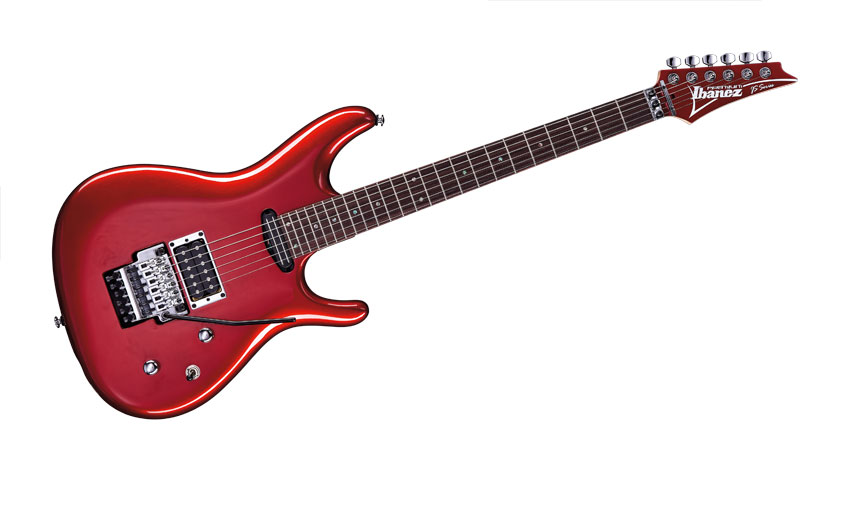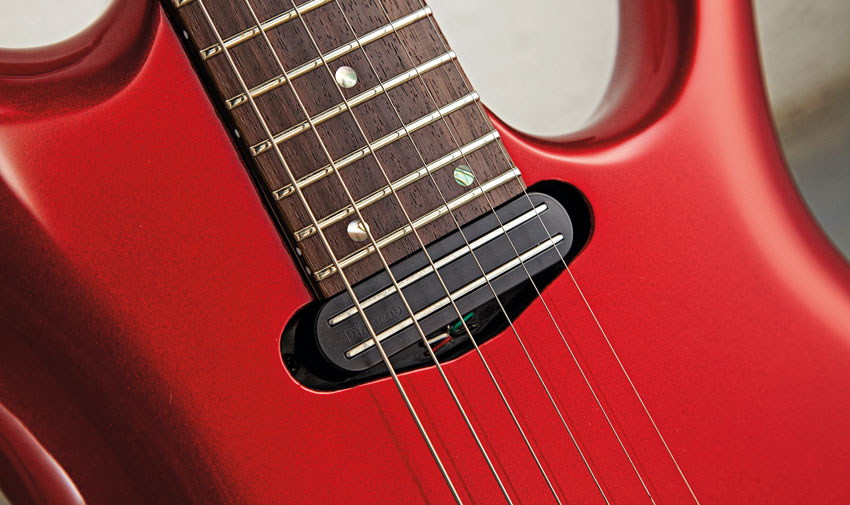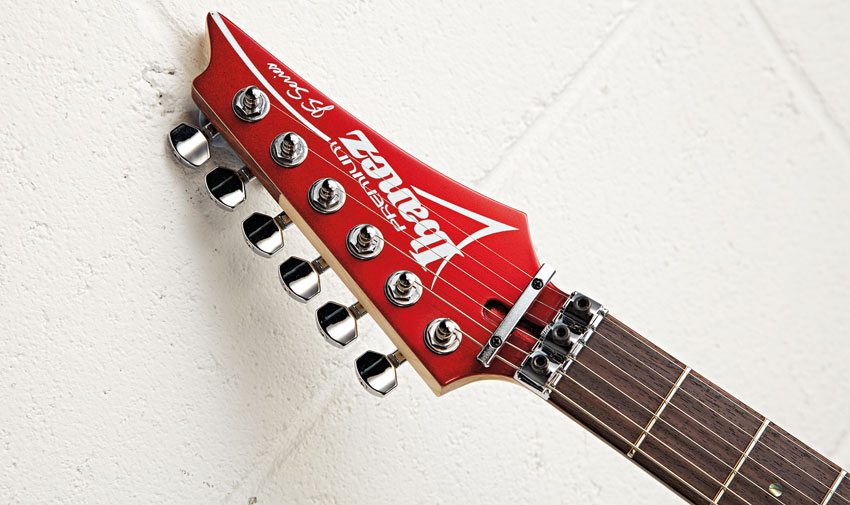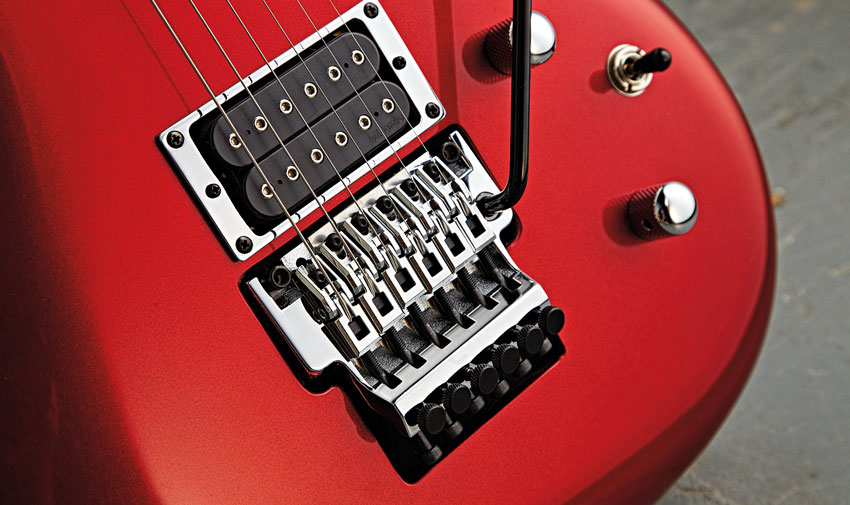MusicRadar Verdict
Very close to Satch's own JS2400, this is a solid and well-priced version of a classic Ibanez.
Pros
- +
Hard rock tones. Great neck. Price tag.
Cons
- -
May be too tonally aggressive for some.
MusicRadar's got your back

Ibanez JS24P review

Pickup

Headstock

Bridge
The Ibanez JS24P is a more affordable take on Joe Satriani's 24 fret signature model and forms part of the new Ibanez Premium Series, which centres on the firm's core rock market with a range of guitars built in East Java, Indonesia.
As Paul Oldfield from Ibanez's UK distributors, Headstock, explains: "The quality and expertise that is associated with the Japanese-made Prestige series models has been utilised for the Premium Series guitars to create a more affordable instrument, but still with Prestige-style appointments."
We've enjoyed Satch's tales of grappling with the change from 22 to 24 frets, and now those with more modest budgets can undergo the same experiences. The JS24P is a full £875 less than the flagship JS2400, yet it offers many of the same features: the pickups, the innovative electronics and the neck feel, among others.
"We've played Joe's own JS2400 and take our word for it: this JS24P plays just as nicely"
Satriani has had a number of signature DiMarzio pickups over the years, and here he employs a Mo' Joe in the bridge along with a single-coil-sized humbucker, The Chopper, at the neck. The volume and tone pots double as a master coil- spilt and high-pass filter respectively, and an ideally sited three-way toggle allows for selection of either or both.
Interestingly, the JS neck's shallow D shape and more rounded 250mm (9.84-inch) fingerboard radius might polarise opinion within the 'flatter-is-better' shred cadre. To our hands, however, it's an exceedingly comfortable compromise between the feel of a flatter radius 'modern' guitar with something a little more classic. For example, Fender's Standard Strat HSS with Floyd Rose vibrato uses a 241mm (9.5-inch) fingerboard radius.
The neck here also features titanium reinforcing rods and a 20mm-thick piece of bubinga flanked by two pieces of maple. We've played Joe's own JS2400 and take our word for it: this JS24P plays just as nicely.
Sounds
"The sound is full and deep, with a characteristic treble edge that allows harmonics to leap out"
With a high-gain amp setting, the JS24P is a guitar that allows you to sound like the artist in question from the first chord you play. The sound is full and deep, with a characteristic treble edge that allows harmonics to leap out - Satch or Chickenfoot-style riffs sound very convincing.
This allows the coil-split functions to have a significant effect on the sound, too, because they keep the twang but lose some of the body, resulting in a clean tone that can be pleasantly enriched with chorus or other modulation effects.
Although it's a subtle effect, using the switchable high-pass filter allows clean tones to remain bright and vibrant when you roll back the guitar's volume - just like a classic Fender Telecaster or PRS Custom. Controlling the tone's character in this way is a useful trick that you can incorporate into your technique.
The neck Chopper pickup belies its name by being very Strat-y in character, and obtaining a creamy tone here can take some time. Overall, though, the guitar plays wonderfully well and there is a decent choice of available sounds. If you can live with the icy edge that surrounds its warm core, you'll love it.
Simon Bradley is a guitar and especially rock guitar expert who worked for Guitarist magazine and has in the past contributed to world-leading music and guitar titles like MusicRadar (obviously), Guitarist, Guitar World and Louder. What he doesn't know about Brian May's playing and, especially, the Red Special, isn't worth knowing.
“I have an original 909 – every time I try to use it I feel like I’m ruining it”: House hero Riva Starr on his studio essentials and his love of analogue synths
“A synthesizer that is both easy to use and fun to play whilst maintaining a decent degree of programming depth and flexibility”: PWM Mantis review
“I feel like that song had everything we needed to come back with”: Bring Me The Horizon’s Lee Malia on Shadow Moses, its riff and the secrets behind its tone, and why it was the right anthem at the right time









